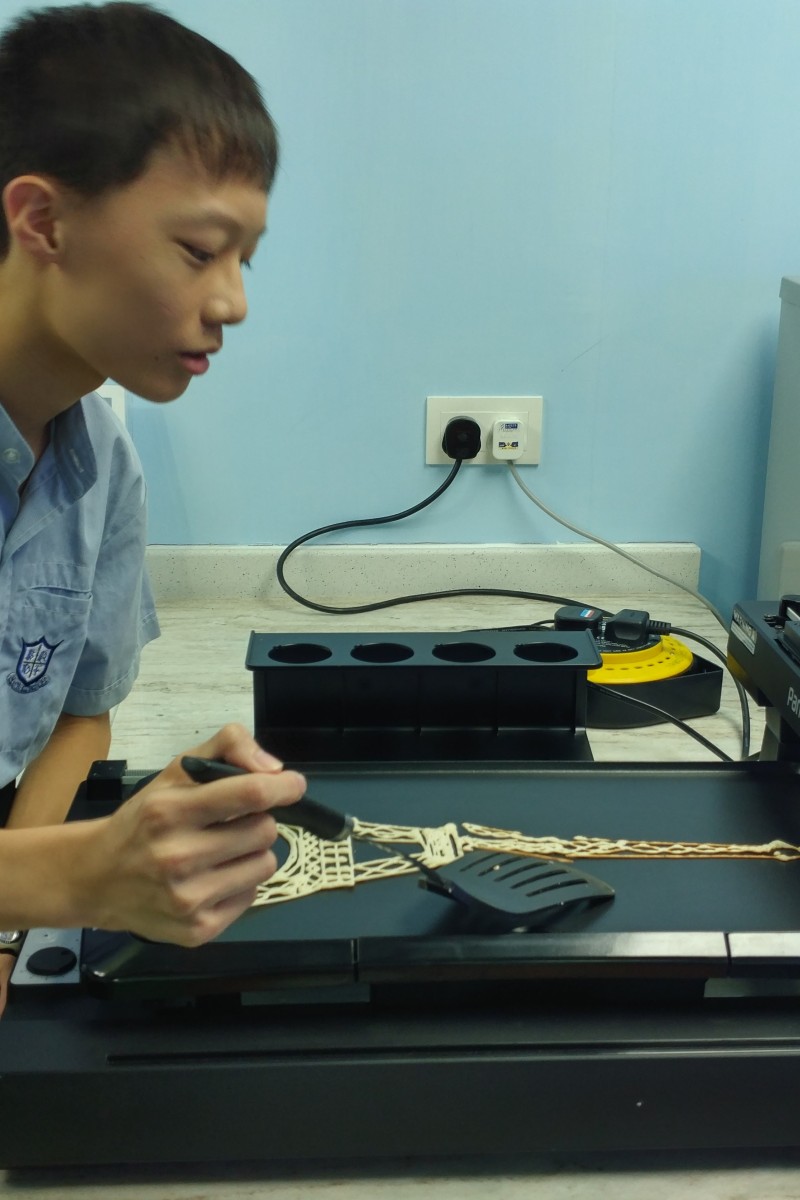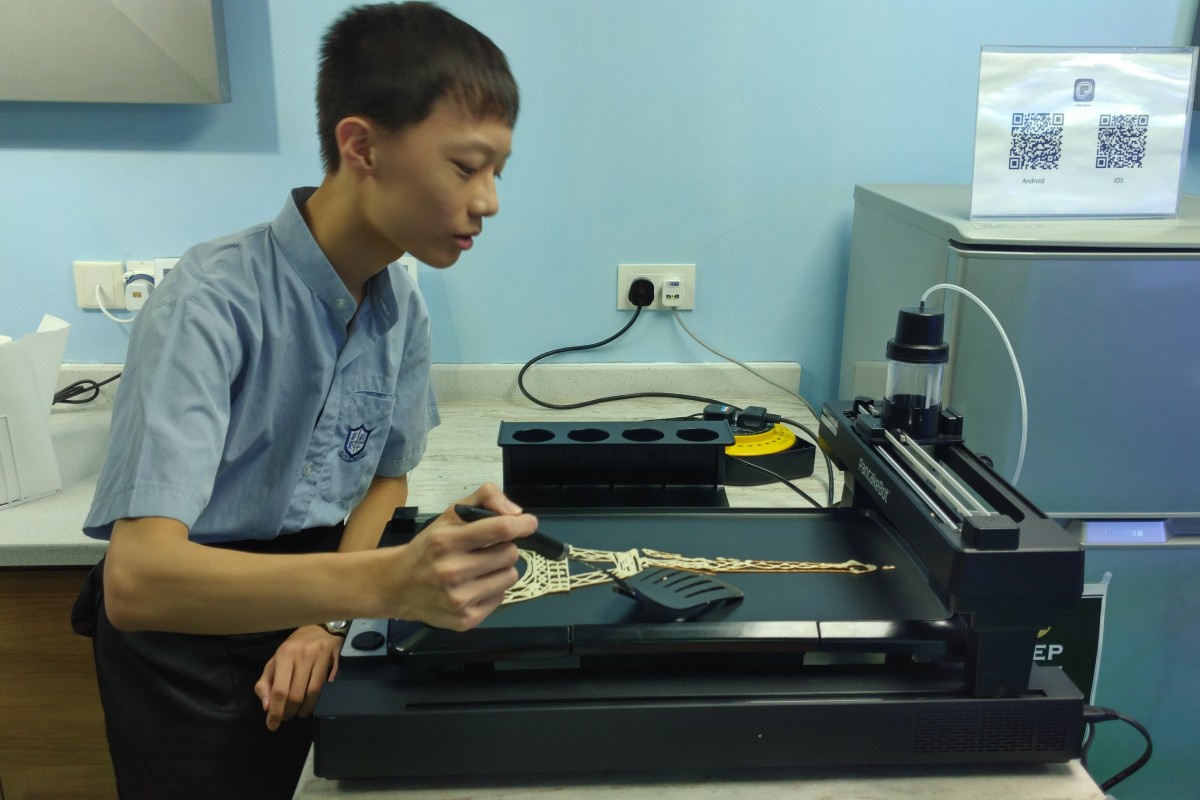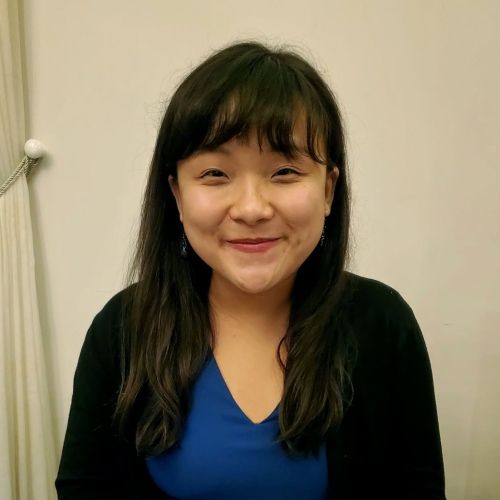
Move over Starbucks, these students are getting a taste of the barista life at school
Thanks to their part in helping to run a student cafe at their school, a group of students have learned much more than just how to prepare a latte and flip a pancake
 Making an Eiffel Tower-shaped pancake is no easy task.
Making an Eiffel Tower-shaped pancake is no easy task.The hiss of an espresso machine, the smell of coffee hanging heavy in the air, and cute, Instagrammable latte art ... the idea of owning your own cafe is pretty cool, but there’s probably a lot of work that goes into it. A group of students at Lok Sin Tong Yu Kan Hing Secondary School have been finding out, once a week, what exactly goes into running a cafe.
Every Monday at lunchtime in the English Aqua Café (the school’s English-only zone), watched by marine life swimming about in a giant fish tank, student ambassadors make drinks and Eiffel-tower-shaped pancakes for students and teachers to enjoy as they talk, play board games, practise piano, watch movies and chat with Native English Teachers.
A couple of teachers and five student ambassadors talked to Young Post over afternoon tea (we know, we work so hard) about their experiences, and how hard it is to be a barista at English Aqua Café.
“It all seemed pretty simple when we watched our teachers do it,” student barista Polly Tsang Pui-wa, 15, said. “But when we tried to make pancakes and prepare coffee, we realised it’s harder than it looks.” Charles Fung Ling-chung, 14, agreed, and said he’d dedicated time to practising latte art as he “wasn’t meeting the requirements of the teachers” when he’d initially joined the cafe.
It’s not just the standard hearts or leaves that the students learn how to make on their coffee, as they can also make use of The Ripple Maker – a coffee machine system which combines 3D printing technology with an ink-jet system. The Ripple Maker can be used to print graphics, words, or even photographs onto the top of any hot drink – perfect for posing with for your social media accounts.
But it isn’t just the drinks that deserve “likes” on your page – it’s the pancakes too. The students use a food printer called the PancakeBot, which can dispense pancake batter onto a griddle in the shape of the Eiffel Tower, a Ferris wheel, a thumbs-up emoji, and aquatic-themed designs that artistic Form One students have created.
Students have to closely monitor the machine as it prints pancakes out, English teacher Emma Tang said, and they have to make sure they don’t burn.
“The batter needs to be beaten to a certain degree of thickness, and they have to control the heat and air pressure of the machine,” she said, and added the nature of some of the designs means students need to handle them with a light touch.
The Form Two-Form Four ambassadors have also gained important management skills on top of their newfound cooking knowledge.
“We’ve had to figure out how to keep things running things smoothly when it gets busy,” said May To Ka-wai, 15. “We’ll divide tasks up so that the customer isn’t waiting long for an order, and that a hot drink is still hot when we serve it.”
Charles said he has learned about financial management thanks to “calculating the cost of a cup of coffee”.
One of the most important things these CMI (Chinese as the medium of instruction) students will take away from their experience is their improved command of English. Outside of English classes, they don’t have a lot of opportunities to speak it, but the students say they’re more confident in speaking English thanks to the cafe.
“They were reluctant to serve customers at the start,” Tang recalled. “But [the use of] English is vital at the cafe. Their constant use of it means they’re more confident expressing themselves in English.”
Student ambassador Mimi Jou Hiu-lam, 15, thinks her spoken English is now more fluent thanks to her use of it at the cafe. Jimmy But Man-ki, 14, agreed, and added that working in the English-only cafe has helped expand his vocabulary.
English teacher Janetta Man said she has seen a new level of maturity in the student ambassadors.
“When they first started, they didn’t really take it very seriously,” Man said. “But now I can see they’ve become more meticulous about things, which was reflected in how hard they prepared for their exams.”
In the future, vice principal Evy Cheung said she would like to recruit Form One students to join the student ambassador team. “I’d like the current student ambassadors to pass on what they’ve learned, and to instil in new staff the positive culture of the cafe and to help sustain its long-term operation.”
With more students trained as baristas, she added, they could also consider opening the cafe on more days of the week, so that more students would be able to benefit from the fun and friendly English learning environment.
Currently priority of using the English Aqua Cafe is given to students with gift vouchers rewarded by teachers for their good learning attitude or lesson performance. Students have to reserve a place at the cafe in advance – though student walk-ins are welcome if the cafe isn’t fully booked.
